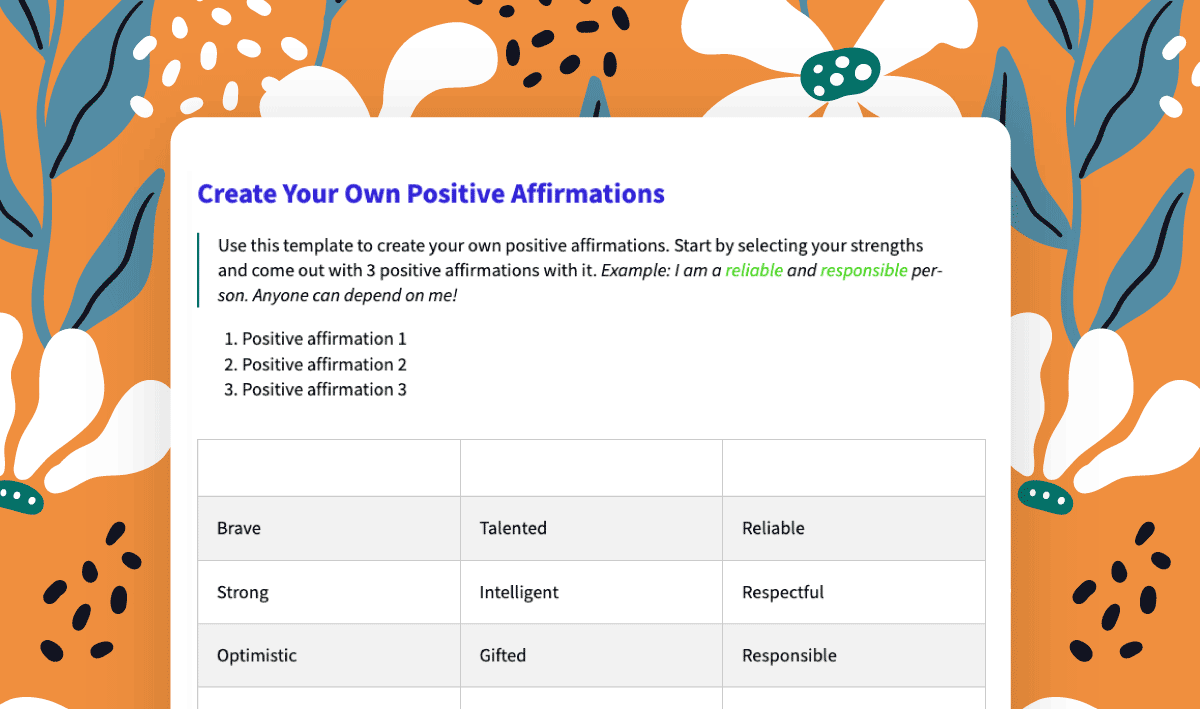We often find ourselves overwhelmed and bombarded with the pressure to "maintain a positive outlook" in our lives. Whether it's through "good vibes only" and "life is good" memes and images on the Internet or on social media, or an overflow of advice telling us to focus on the bright side from the people around us, we are constantly told that the key to happiness lies in suppressing negativity in ourselves and others. Even in the face of illness, loss, and other challenges, there seems to be little room for discussing our genuine emotions and processing them in order to heal and move forward.
However, if this constant stream of positivity is the solution, why do so many of us continue to grapple with anxiety, depression, and burnout?
In this candid book, highly sought-after therapist Whitney Goodman discusses her latest research findings, paired with relatable examples from everyday life and stories from her clients about this. She reveals the detrimental impact of toxic positivity on our well-being and relationships, while offering straightforward methods to confront and navigate difficult emotions. The ultimate outcome is greater authenticity, deeper connections, personal growth, and, most importantly, the ability to show up in the world as our true selves.
Read on to find out more about what Goodman has to offer!

What is "Toxic Positivity: Keeping It Real in a World Obsessed with Being Happy" about?
“Healthy positivity means making space for both reality and hope. Toxic positivity denies an emotion and forces us to suppress it. When we use toxic positivity, we are telling ourselves and others that this emotion shouldn’t exist, it’s wrong, and if we try just a little bit harder, we can eliminate it entirely.” ― Whitney Goodman
"Toxic Positivity: Keeping It Real in a World Obsessed with Being Happy" by Whitney Goodman explores the harmful effects of the prevalent culture of relentless positivity and encourages a more balanced approach to emotions and well-being. The author addresses the societal pressure to always appear happy and upbeat, arguing that it can lead to suppressing genuine emotions and denying the complexity of human experiences.
The author delves into the pressures and expectations of constantly projecting a positive image, addressing topics such as social media, self-help culture, and the fear of being perceived as negative. Through research, personal anecdotes, and client stories, the book sheds light on the harmful effects of toxic positivity, such as suppressing genuine emotions, dismissing valid concerns, and undermining personal growth.
By advocating for emotional authenticity and self-compassion, the author offers practical strategies and exercises to help readers navigate the complexities of their emotions, foster healthier relationships, and cultivate a more balanced sense of well-being. Ultimately, the book aims to empower individuals to embrace their true feelings, challenge societal norms, and live a more genuine and fulfilling life.
Examples of Toxic Positivity
Goodman mentions a few examples of instances during which toxic positivity can take effect on your state of mind in everyday life. These include:
- People telling you that you shouldn't be feeling what you're feeling
- Someone encouraging you to be happy all the time and always see the "good"
- The assumption that you are a negative person if you can’t or are struggling to find the silver lining in a situation
- Spending time with someone who looks out for the "good" and ignores or does not acknowledge anything "bad"
- Being shamed for having bad days or negative moments
- Having someone respond to your sadness or pain by using phrases or statements that diminish what you are experiencing in an attempt to help you "feel better" or "get over it."

7 Tips For Getting Rid of Toxic Positivity
1. Understand that toxic positivity can bring negativity.
Understanding that toxic positivity can bring about negativity instead means that the relentless pursuit of positivity and the denial or suppression of negative emotions can actually have negative consequences on an individual's well-being.
The statement is highlighting the fact that toxic positivity, despite its emphasis on positivity, can lead to negativity in several ways. When negative emotions are consistently denied or suppressed in the pursuit of being positive, they can build up over time and lead to increased stress, anxiety, or even depression. Ignoring negative emotions does not make them disappear; it only pushes them aside temporarily, potentially causing more significant issues later on.

Toxic positivity can also dismiss or invalidate the experiences of individuals who are going through challenging times or facing difficult circumstances. By promoting an idealized version of constant happiness, it can create an environment where genuine struggles are overlooked or downplayed, leading to feelings of isolation and lack of support. The pressure to maintain a positive attitude at all times can create unrealistic expectations for individuals, making them feel like they are failing if they experience negative emotions or difficulties. This can lead to self-judgment, feelings of inadequacy, and a constant sense of striving for an unattainable state of perpetual happiness.
By understanding that toxic positivity can bring negativity, individuals can recognize the potential harm it can cause and take steps to adopt a more balanced and authentic approach to emotions. It encourages individuals to embrace the full range of emotions, acknowledge their struggles, and seek support when needed, rather than constantly striving for an unattainable state of forced happiness.
2. Embrace the full range of your emotions.
One of the main lessons is to acknowledge and embrace the full spectrum of human emotions, both positive and negative. It emphasizes that it's okay to feel sad, angry, or frustrated, and that suppressing these emotions can be harmful in the long run. Accepting and expressing emotions authentically is essential for personal growth and overall well-being. Goodman suggests that it is important to acknowledge, accept, and allow oneself to experience a wide spectrum of emotions, both positive and negative, rather than suppressing or denying certain emotions in favor of always trying to be happy.
Toxic positivity refers to the cultural expectation or pressure to maintain a positive attitude at all times, regardless of the circumstances. It promotes the idea that one should only focus on positive thinking, pushing away or ignoring any negative emotions. However, this mindset can be detrimental because it invalidates genuine emotions and prevents individuals from fully processing and addressing their feelings.

Goodman doesn’t advocate misery. She recognizes that happiness and positivity are good as long as we don’t default to maintaining a façade. By encouraging the embracing of the full range of emotions, she suggests that it is healthier and more authentic to acknowledge and accept all emotions, whether they are positive or negative. This approach allows individuals to have a more balanced and realistic understanding of their emotional experiences. It acknowledges that experiencing a range of emotions is a natural part of being human and that suppressing or denying certain emotions can have negative consequences on mental and emotional well-being.
“Instead of learning how to get rid of challenging emotions, we need to learn how to sit with, process, and live with them.” ― Whitney Goodman
3. Don't be afraid of negative emotions
The book highlights the dangers of toxic positivity, which involves dismissing or invalidating negative emotions in an attempt to maintain constant positivity. Readers are encouraged to challenge this mindset and recognize that it's okay to experience and express negativity when it's warranted. It emphasizes the importance of being real and genuine rather than conforming to societal expectations of relentless happiness.
Toxic positivity promotes the idea that negative emotions should be avoided or quickly overcome. It creates a culture that stigmatizes or devalues emotions like sadness, anger, grief, or frustration, labelling them as "bad" or "unproductive." However, this attitude can be detrimental because it denies the validity of these emotions and hinders genuine emotional growth and healing.

By urging readers not to be afraid of negative emotions, Goodman encourages embracing and acknowledging them as essential aspects of the human experience. Negative emotions serve a purpose and can provide valuable information about ourselves and our environment. They can be signals that something is not right or that we need to address certain issues in our lives.
Instead of fearing or suppressing negative emotions, the author suggests that it is more beneficial to allow ourselves to fully experience and process them. This includes understanding the root causes of these emotions, reflecting on their meaning, and using them as opportunities for personal growth and self-reflection. By doing so, individuals can develop emotional resilience and a deeper understanding of themselves.
4. Cultivate self-compassion
A central lesson of the book is the importance of self-compassion. The book encourages readers to treat themselves with kindness, understanding, and acceptance, even when they're experiencing difficult emotions.
Goodman emphasizes the importance of treating oneself with kindness, understanding, and acceptance. Self-compassion involves extending the same care and empathy towards oneself as one would to a close friend or loved one. By practicing self-compassion, readers can develop resilience, self-awareness, and a healthier relationship with their own emotions.
In a culture that promotes toxic positivity, individuals often feel pressured to meet unrealistic standards of happiness and perfection. They may judge themselves harshly for experiencing negative emotions or perceive their struggles as personal failures. Cultivating self-compassion is a way to counteract these tendencies and develop a healthier and more compassionate relationship with oneself.
Instead of denying or dismissing one's pain, it involves recognizing and accepting that difficulties and negative emotions are a natural part of life. This involves responding to one's own suffering and challenges with understanding, gentleness, and self-care. This means offering oneself the same support and comfort that one would offer to a friend in need.

5. Build authentic relationships
Goodman talks about the importance of fostering genuine connections with others based on honesty, vulnerability, and acceptance of both positive and negative aspects of one's life.
Toxic positivity often promotes a superficial or forced sense of happiness, where individuals feel pressured to present only the positive aspects of their lives and hide or downplay any struggles or negative emotions. This can create a barrier to authentic connection because people are unable to express their true selves and share their real experiences.
Building authentic relationships involves being open and honest about one's feelings, experiences, and challenges. It means allowing oneself to be vulnerable and sharing both positive and negative aspects of life with others. It also involves actively listening to others without judgment and seeking to understand their experiences. It requires empathy, putting oneself in the other person's shoes and providing support and understanding. It also means accepting others as they are, including their flaws, struggles, and negative emotions. Authentic relationships are built on non-judgment and acceptance of each other's authentic selves.
By focusing on building authentic relationships, individuals can create meaningful connections with others that go beyond surface-level interactions. Maintaining and strengthening these relationships provides a space where individuals can be their true selves, express their emotions, and find support and understanding.

6. Develop emotional resilience
Goodman talks about emotional resilience by referring to the ability to adapt, bounce back, and navigate through challenging or difficult emotions and situations effectively.
Toxic positivity often encourages the suppression or denial of negative emotions, which can hinder the development of emotional resilience. Developing emotional resilience involves recognizing and accepting a wide range of emotions, including the negative ones, as valid and normal human experiences.
It also involves taking the time to reflect on and understand the underlying causes and triggers of one's emotions. By exploring the root causes, individuals can gain insight into their emotional experiences and learn how to respond to them in a healthy and adaptive way. Emotional resilience can also be developed by building effective coping strategies to manage and regulate emotions. This includes developing healthy ways of expressing emotions, seeking support from others, practicing self-care, and engaging in activities that promote well-being.

Emotional resilience is also nurtured by cultivating a growth mindset, which involves viewing challenges and setbacks as opportunities for learning and personal growth. It means reframing difficulties as temporary and surmountable, and believing in one's ability to navigate through them.
7. Choose your positive affirmations carefully
This may surprise you, but Goodman isn’t against the use of positive affirmations. However, to be effective, affirmations have to be true – or at least achievable. She suggests that the use of positive affirmations should be approached with discernment and thoughtfulness.
Positive affirmations are statements or phrases aimed at promoting positive thinking and self-belief. They are often used as a tool to counter negative self-talk and cultivate a more optimistic mindset. However, in the context of toxic positivity, the author cautions against blindly embracing positive affirmations without considering their potential drawbacks. For example, saying “I love my body” is unlikely to work if you actually feel the opposite way. So instead, try a more flexible affirmation like “I can learn to love my body.”
If you wish to choose and use positive affirmations in your life, explore Journey's wide range of writing tools that can aid and guide your reflections. Amongst these tools, there are journaling templates that you can use as bedrocks and as specially curated tools that you can look toward for help with cultivating the habit of using positive affirmations.
Choosing positive affirmations that truly work for you and serve your needs is one of the many steps to self-care, self-love and self-improvement. You can develop this habit with the help of Journey's Positive Affirmations template to gain confidence. With the help of the keywords that are provided, select your strength from the table of keywords and write out 3 positive affirmations that would help you get through challenges.

Choosing positive affirmations carefully involves reflecting on whether the positive affirmations align with one's genuine thoughts, feelings, and experiences. Blindly repeating affirmations that feel disconnected or disingenuous may contribute to an unhealthy suppression of true emotions or create a false sense of positivity.
Bear in mind that these positive affirmations do not dismiss or invalidate negative emotions. The author encourages readers to avoid affirmations that overlook or minimize genuine feelings of sadness, anger, or frustration. Suppressing or denying negative emotions can be harmful to one's overall well-being.
We live in a “look for the silver lining” world. We admire the “glass half-full” view of the world. But that pressure to be positive can have a negative impact on our emotional and physical well-being. The book "Toxic Positivity: Keeping It Real in a World Obsessed with Being Happy" invites us to challenge this very societal pressure of constant happiness and perfection. It urges us to embrace our true selves, with all our strengths, vulnerabilities, and emotions. By doing so, we can cultivate emotional resilience, navigate challenges more effectively, and lead more authentic and fulfilling lives.
In a world where toxic positivity prevails, this book serves as a powerful reminder to prioritize our emotional well-being, seek genuine connections, and embrace the complexities of being human. Armed with the tips from this book and your own life experiences, embark on a journey of self-discovery, where happiness is not forced, but rather found through authenticity, acceptance, and embracing the full spectrum of our emotions.

